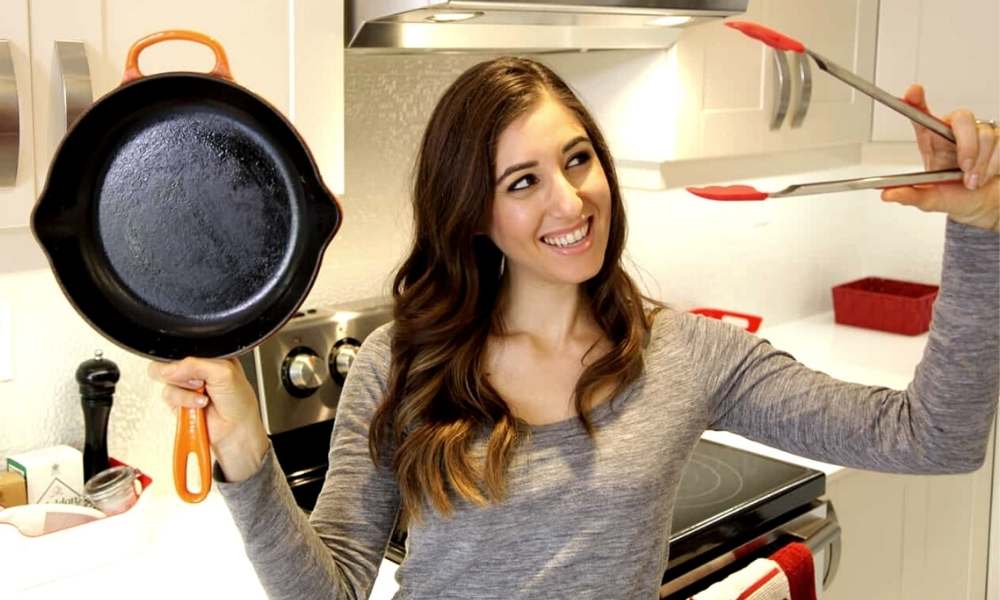Anodizing is A process in which the surface Of aluminum Alloy or stainless steel is coated with A thin layer Of oxide (aluminum oxide). The most difficult surface to clean is cast iron. Cast iron is commonly used in many professional kitchens. It is durable and versatile, but it gets dirty very easily due to its porous nature. This coating creates a barrier between the metal and corrosive food items such as acidic vegetables and fruits. Anodizing helps to protect and preserve the metal and prolong its useful life. So you need to know how to clean hard anodized cookware.
What Is Hard Anodized Cookware?
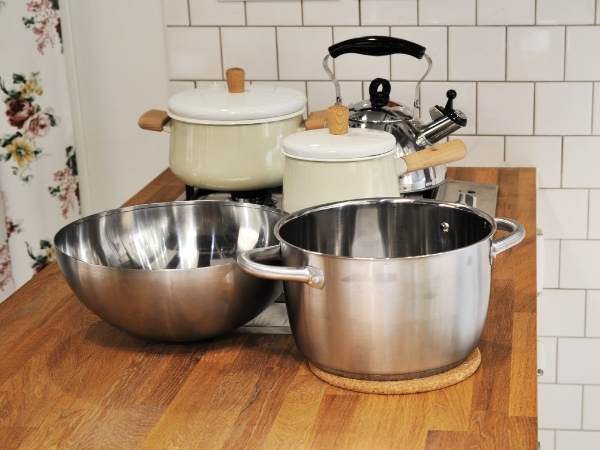
Hard anodized cookware is a type of non-stick pan. These pans are modified by adding an additional layer of aluminum oxide over the stainless steel. The two metals fuse together at high temperatures to form a hard protective layer on the surface of the pan. This extra layer makes it harder than standard stainless steel. As the name suggests, these pans are harder than normal pans and do not react well to acidic food products. These pans are heat And scratch-resistant, Making them ideal for use in both professional kitchens And home cooking.
I will show several methods here. You can take anyone as per your requirement and know to clean hard anodized cookware.
Method-1
Preparation
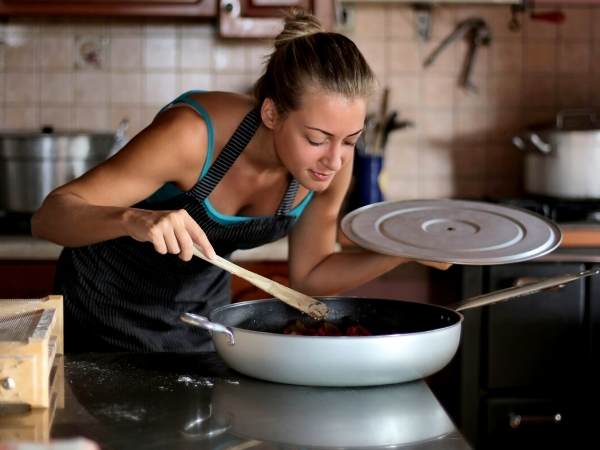
Before using the cookware, Wipe the surface with A damp cloth so that no foreign particles remain. To prevent rust or staining, do not soak the cookware in water for 48 hours after cleaning.
Wash Your Equipment!
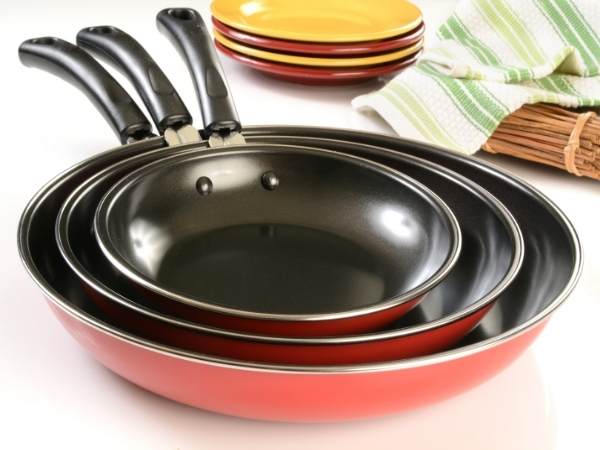
To avoid cross-contamination, wash your equipment regularly. Wash them before preparing anything acidic or abrasive. Take care to dry them properly; However, you should not place them directly on the stove or in the oven to dry. If possible, hang them up and allow them to air dry.
Allow Cookware To Cool
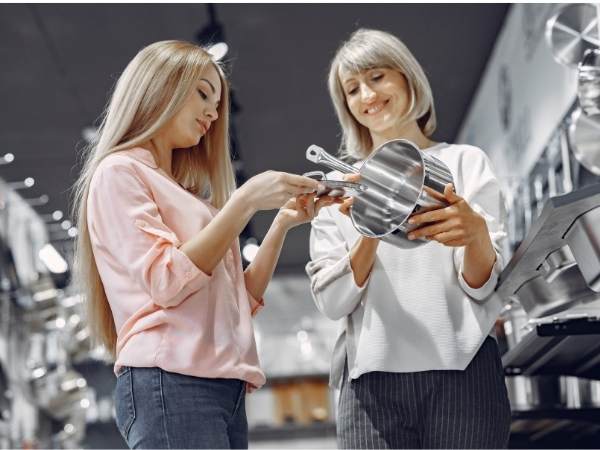
Many people don’t realize how dangerous and harmful cooking oil is on their stovetops. Hard anodization is a surface treatment that creates a non-stick coating for pots and pans. Unfortunately, when using these cookware items, they often get hot enough to damage the surface layer. When this happens, the damage can cause the coating to peel off, leaving behind metal particles that can potentially scratch your ceramic cookware.
To prevent this from happening, We recommend letting your cookware sit outside after use And allowing them to cool completely before cleaning.
Wash Off With Warm Water

After soaking, rinse the pot or pan thoroughly under hot running water to remove any remaining residue. Do not use tap water; Using only filtered or distilled water will ensure that no harmful chemicals remain in the pot or pan after cleaning. If you want to Add some extra shine, Apply A little dish soap to the pan And let it sit while you rinse.
Soak With Baking Soda

First things first, Be sure to thoroughly wash off Any dirt that has accumulated on the surface Of your pan. After washing the surface of the pan, Fill it with A mixture Of equal parts baking soda And vinegar. Let to see clean hard anodized cookware and sit overnight, then wipe off any remaining residue with a damp cloth. Rinse again with warm water And dry completely with A paper towel.
Soap And Scrub
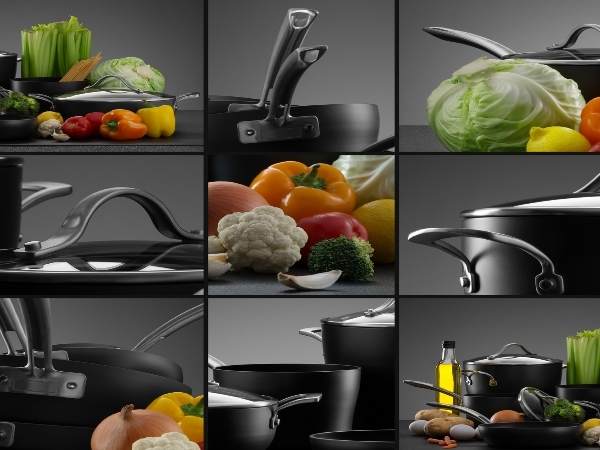
Use a scouring pad or sponge attached to a scrubby material. A scouring pad is great for small pots and pans. When using a scouring pad, always hold it vertically. Also, don’t let it get wet if it gets flooded. The pads can get stuck and give bad results.
Scrub With Oil
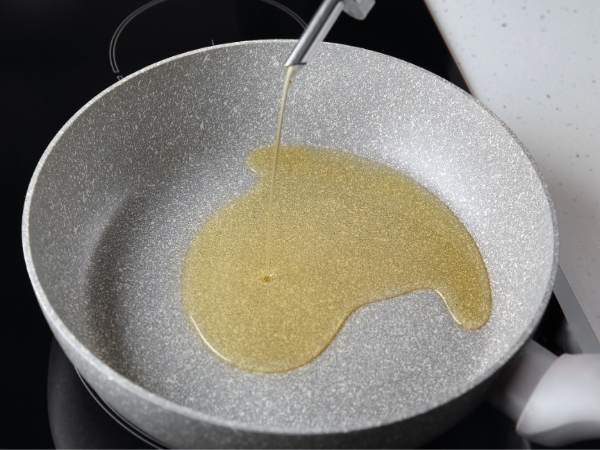
Next, Add about half A quart (120 ml) of olive oil to A plastic container And pour it over the entire surface of your pan. Use your fingertips to rub the oil on the outer surface of the pan. Remember not to pour oil directly on the bottom of the pan, Otherwise, It will damage the nonstick coating. Once your pan is completely coated with oil, Let it sit overnight. In the morning, scrub the inside and outside of the pan with a sponge soaked in warm water and dish soap. After using a sponge, rinse the pan under running water until the soap is free, and rinse once more if necessary. Dry completely with paper towels. If you see any stubborn grease residue after cleaning, use some extra oil to remove it.
Use Soap & Water
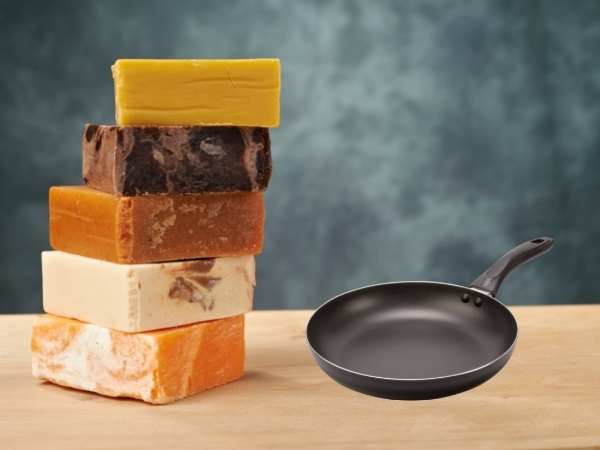
Soap and hot water are the best tools for cleaning any type of cookware. Soap cleans grease, while slightly warm water removes food residue. If anything else remains, rinse and dry the pan. Be sure to use only baking soda or salt (not table salt). Salt has a corrosive effect that will eat away at aluminum pans over time. Baking soda is a natural leavening agent, safe to leave on aluminum pans. Do not mix both ingredients together; They react chemically and can cause bubbles in the finish.
Rinse
After washing with soap and hot water, rinse the pan thoroughly. Try to keep the pan moist by laying it flat in the sink or hanging it upside down. Never put your hands inside the pan and do not pour boiling water directly. The vapor barrier helps prevent corrosion
Dry to clean hard anodized cookware

If you want to make sure there is no oil left. On your kitchen surface, wipe it with a paper towel. Or set the Oven to 200 degrees Fahrenheit. Be careful not to burn yourself!
Method-2
Choose Your Products Carefully

There are a few things to consider When choosing which product to Use. First, choose something that won’t scratch or damage your surface. Second, avoid abrasive cleaners and use only non-abrasive ones. Third, look at the pH of the cleaner. If you have A sensitive surface (like glass), you may need to use A cleaner with a lower pH. Fourth, always rinse off any cleaner after cleaning to ensure no harmful residue remains.
There are different methods depending on what kind Of material you Have. But you want to make sure you don’t scratch your surface. When using abrasive cleaners, Be sure to use them sparingly And always rinse thoroughly afterward.
Cleaning The Interior
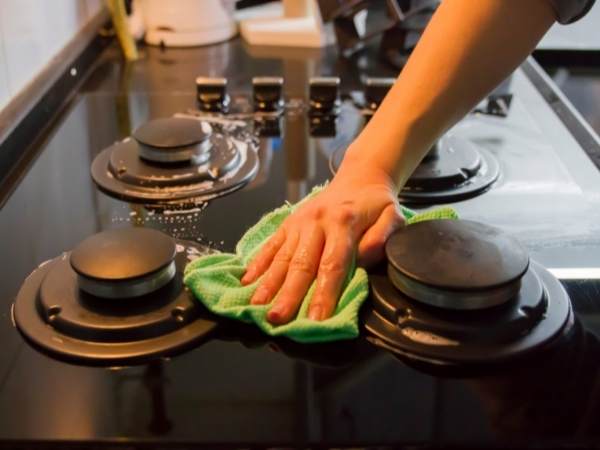
Scraping And Scrubbing
A scraper should use instead of a metal utensil to scrape the dirt. Metal utensils will scratch over time whereas a scraper will not. A good way to store scrapers is in a container filled with a dryer sheet.
Some people prefer to use chemical cleaners to clean their stainless steel pots and pans. However, these chemicals can damage the finish over time. There are many natural options to effectively clean your cookware. A scrubbing brush and baking soda are a great way to maintain a good shine on any surface. Wash cookware with soap to remove stubborn stains.
Baking Soda clean hard anodized cookware
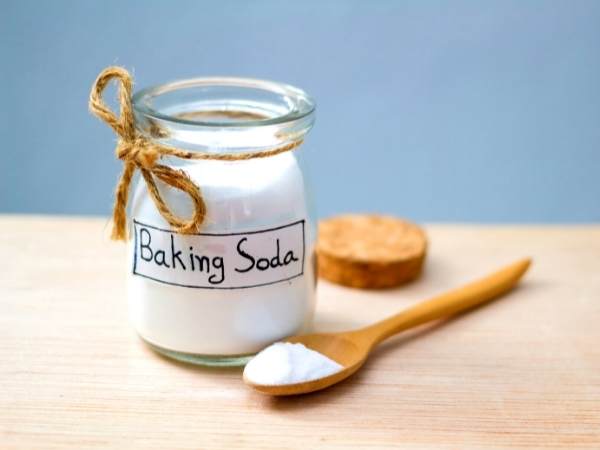
Baking soda is A natural product that works just As well as dish soap. Add 2 teaspoons Of baking soda to about 10 ounces Of warm water. Use a scrubber brush to apply the mixture to your cookware. Let it sit for About 30 minutes before washing it Off with cold water. Your stovetop can now look shiny like new!
Vinegar
Vinegar is a popular cleaner because of its effectiveness in removing tough stains. Just mix vinegar and water together and pour them into your pan. Let sit for a few minutes then rinse. If the stain still remains, repeat the process again until it’s gone!
Cleaning The Exterior
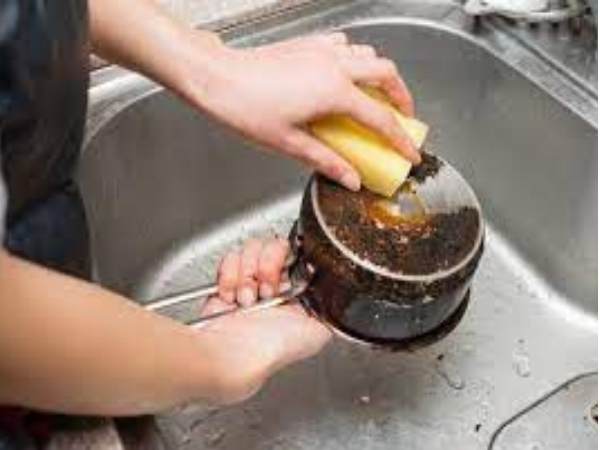
Dish Soap And Water
Both dish soap and water are effective cleaning products. To clean pots and pans, fill a sink with hot water. Add a few drops of dish soap and set aside until foamy..Rinse with running tap water.
Baking Soda
Baking soda is great for cleaning stainless steel appliances like stoves and ovens. Mix A small amount Of baking soda with enough hot water to make A paste. Scrub the surface with A soft bristle brush or sponge. Let sit for 28- 30 minutes then wash.
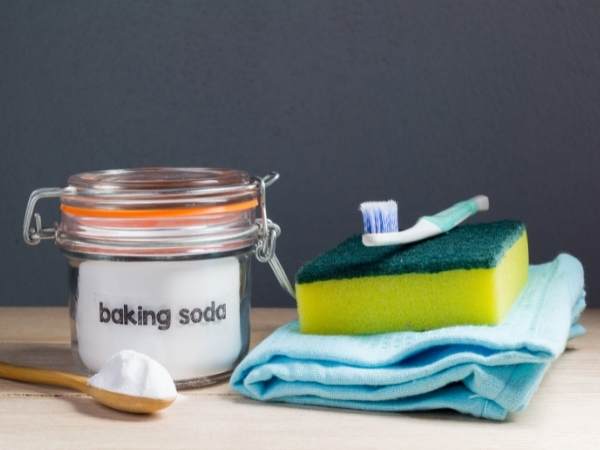
Citrus Scrub
A citrus scrub is a great way to get rid of layers of baked-on grease and grime. Simply add equal parts lemon juice and dish soap to a bowl. Mix well and apply with a sponge or soft-bristled brush. Leave on for 9-10 minutes, Then wipe Off with A damp cloth.
Dry
Keep your pots And pans dry, Covered, And out Of direct sunlight. Store your pots and pans in a cool, dark place where they won’t collect moisture. If storing in direct sunlight, cover the entire container with foil.
Method -3
Cast iron is known for its durability, But these pans need a lot of TLC. You have to season them well and maintain the surface regularly, otherwise, they will rust.
Step-1
Take everything apart. Don’t worry about damaging anything, just separate the parts. Be careful not to damage any handles or knobs. Once you’ve taken everything apart, wipe the outside with a paper towel dampened with hot water and dish soap. Let it sit for a while so that any dirt sinks into the pores of the pan and begins to loosen. Completely rinsing is optional – although I find that rinsing allows me to check the insides of the appliance without having to open each piece at once. When you’re done, pat dry with a paper towel and repeat the steps above.
Step-2
After wiping the outside of your pan, carefully remove the bottom rubber seal. Wipe the inside of the pan with a paper towel with hot water and dish detergent. Again, don’t worry about washing off the seasoning; We will apply a fresh coat shortly. After removing the rubber seal, turn the lid upside down and press firmly. Once the seal is loose And the underside is exposed, Wash both sides thoroughly with warm water And/or dish detergent. Give both sides a final patdown with paper. Towel to make sure any remaining debris is removed.
Step-3
Apply A thin layer Of oil to the inside of the pan with A pastry brush.. A silicone brush works great for this application. Just make sure you don’t spray it directly on the pan – you want to avoid any excess oil on the pan. If you notice any spots where the previous coating hasn’t dried enough, rub the area with your fingers and scrape off the excess. Finally, Lightly sprinkle salt on the inside Of the pan And repeat the same procedure as before. This helps create A barrier between the spices and the food, Preventing it from sticking to the pan.
Step-4
Pat the entire surface of the pan down with a paper towel, making sure to cover the entire surface. Pressing down the surface ensures that no pockets are left open. It can lead to excessive adhesion. Repeat the above step until the surface Of the pan is smooth And evenly coated.
Step-5
Once you’ve got all the grease and residue off the pan, it’s time to reassemble it. Make sure you don’t reuse the rubber seal again. Instead, you should replace it with a new one supplied with the product. Also, Be sure to lubricate the bottom Of the pan with A small amount Of liquid dish detergent, Spreading it over the entire surface. Reapply the seasoning according to the manufacturer’s instructions. Now that you’re done. It’s time to enjoy your shiny new high-quality cookware!
There are also some simpler methods that you can use to quickly learn how to clean hard anodized cookware.
1. Soap And Water Cleaning Method
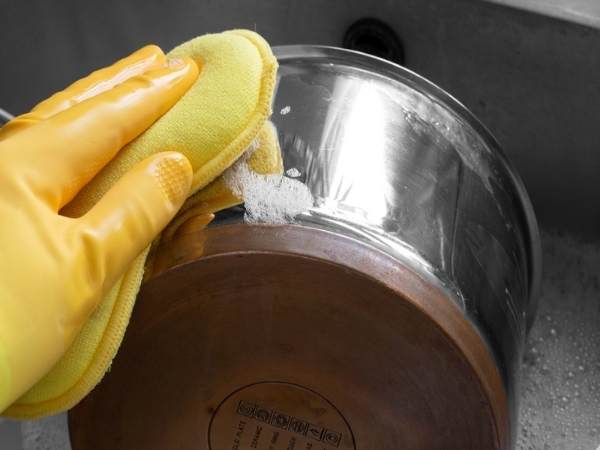
This method is recommended for cleaning uncoated cookware. Put some soap in hot water and scrub the inside and outside of the pan using a sponge or rag. Rinse well then dry completely. Repeat if necessary and use a plastic dishcloth to wipe off any remaining residue. If you have problems or concerns about your pans, consider having them professionally cleaned.
2. Cleaning Method Brushing
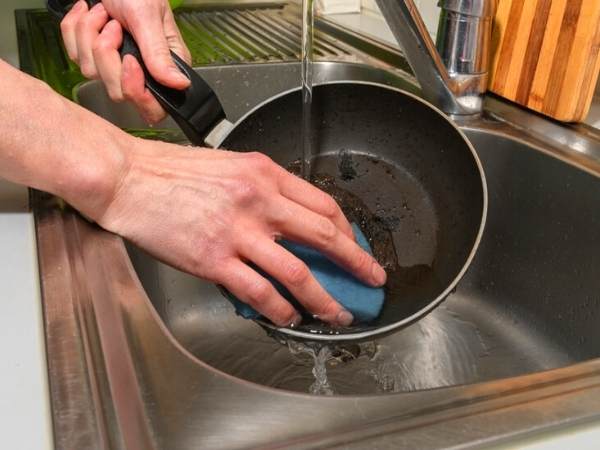
Use A toothbrush to remove stubborn dirt And grime from the inner And outer surfaces Of the pan. Try not to touch the brushed area until it is completely dry. Next, lightly sand the entire pan to restore surface smoothness and patina. Do not use abrasives because they can damage the finish.
3. Pour Clean Method
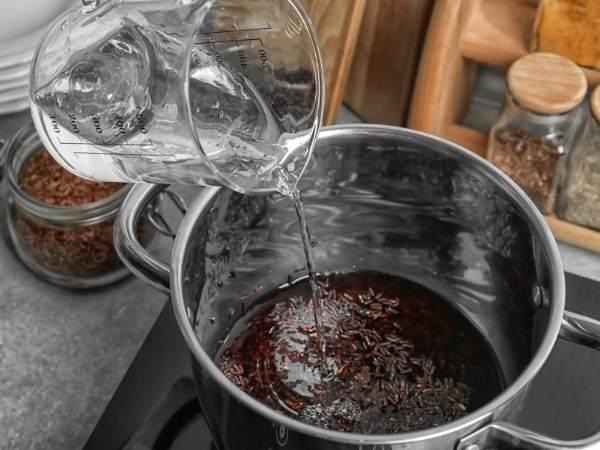
Mix 1 tablespoon of baking soda in hot water and use. Pour into the pan and leave overnight. Drain and rinse thoroughly before drying completely.
4. Polishing Cleaning Method

Wet a cloth with cold water. Drain off excess liquid and gently scrape the inside of the pan. Rubbing can scratch the surface of the pan. Keep rubbing the inside Of the pan with A damp cloth until it is shiny And the surface is smooth. Use a soft rag to buff the finish to remove scratches and fingerprints. Once dry, Wipe Off the residue with A slightly damp towel. Dry to clean hard anodized cookware the pan completely and store in a safe place.
1. How To clean hard anodized cookware Clean Safely?
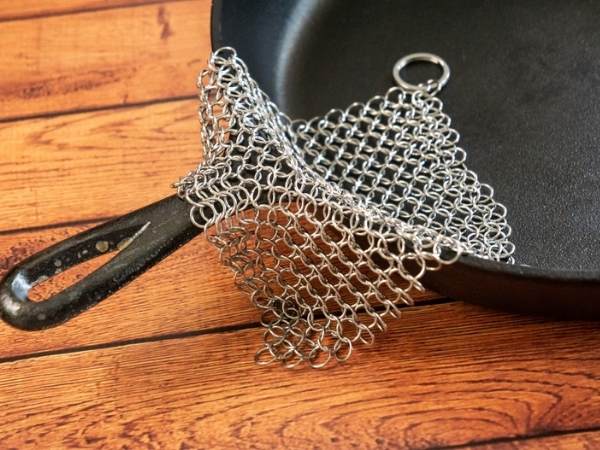
First, Preheat the Oven to 400 Degrees Fahrenheit. Then, Place your cooking pot inside And let it sit for 20 minutes. After the time is up, Take the pan out And spray with non-stick cooking spray. After that, put each item in the oven for 10 minutes. You should notice that the grease no longer sticks to the pan or stove.
2. Why Soap?
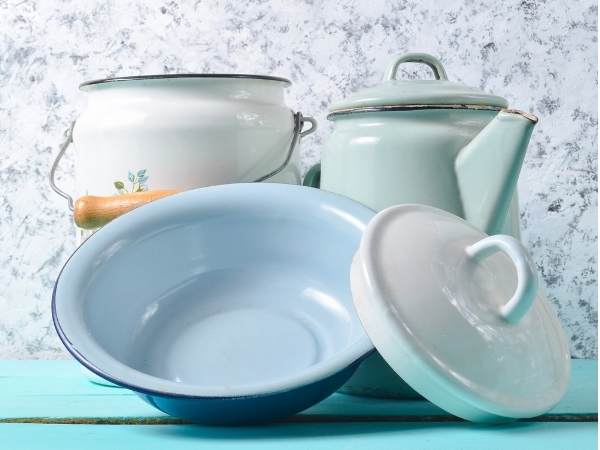
Soap is actually An alkaline cleanser, Meaning it dissolves fats And oils. But soap isn’t just any old alkaline cleaner – it contains fatty acid molecules that stick to grease and grime and break them down. In the heat, The fatty acids are further broken down, Allowing them to be cleaned. To make sure all the grease comes out, we recommend using bar soap instead of liquid soap. Bar soap dissolves much faster than liquid and does not leave a residue like liquid. Plus, bar soap is easy to measure and scoop.
3. How Long Does Anodized Cookware Last?
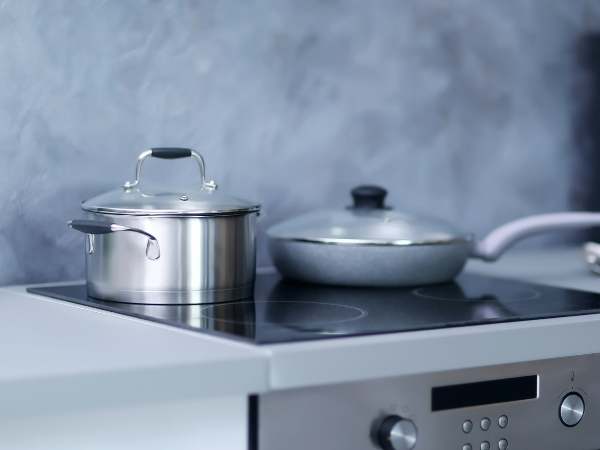
Anodized cookware should last for years if properly cared for. However, it is recommended to avoid cooking acidic foods. It is as if the acidity of the food can break down the coating.
4. Can I Use Soap Or Salt?

Yes! But if you do use soap, make sure not to use anything stronger than dishwashing liquid. You don’t want to remove the protective layer of metal. Salt works great for removing rust stains and giving food a nice shine. Sprinkle a little on the pot and scrub until it’s gone.
5. Should I Bake My Pan?
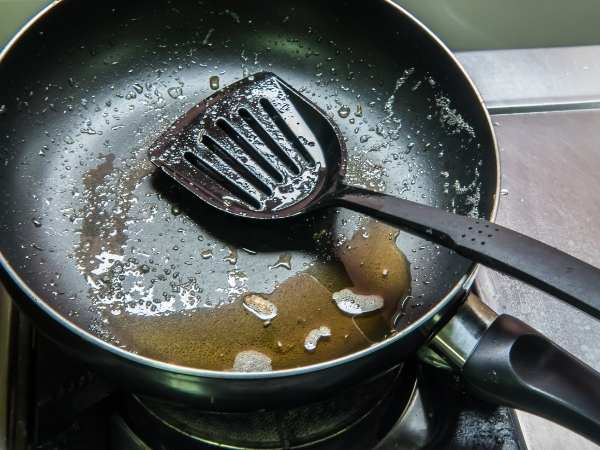
If you live in a dry climate, it’s best to leave your pans in the sun for a while before baking. However, if you live in a place that gets really humid and rainy, it’s best to bake your pans now. Baking removes oil that keeps your pans shiny and helps prevent stains.
6. .What Are The Advantages Of Hard Anodized Cookware?
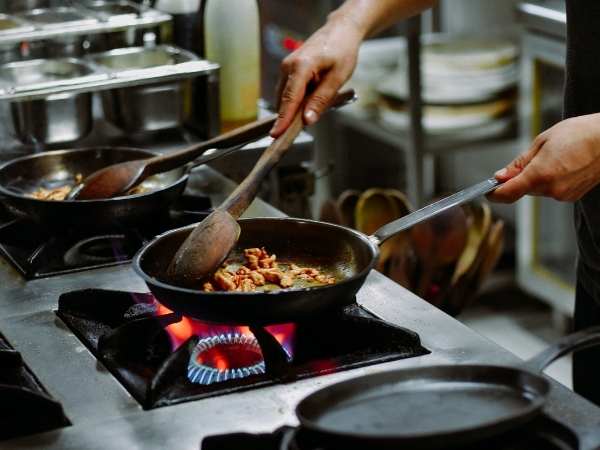
Anodizing is A process in which metal is exposed. To a strong electric current (usually at least 30 volts) and an acid bath, often containing sulfuric acid. The result is A thin coating Of aluminum oxide, Making the surface non-conductive. It creates A high-gloss finish that resists scratching, Staining, And tarnishing. The resulting metal is stronger than unalloyed steel and much harder to wear and corrosion resistant and thus highly valued in kitchen tools. Anodized cooking pans have many advantages over traditional stainless steel. The exterior is non-porous And does not react with food, While the interior is naturally corrosion-resistant. Unlike steel, the body is not prone to rust. In addition, anodization gives the pan a beautiful shine.
Final Words
The first step in cleaning hard anodized cookware is to remove Any residue left over from A previous cooking session. Using a brush, scrub kitchen surfaces to loosen food residue; If necessary, use steel wool or sandpaper to get any small cracks. Once clean, rinse the cookware thoroughly under running water.
These pots are great for camping, fishing, home cooking, baking, etc We use our hard anodized aluminum pots, pans, bowls and containers almost every day. I hope these tips help you learn how to clean hard anodized cookware.


